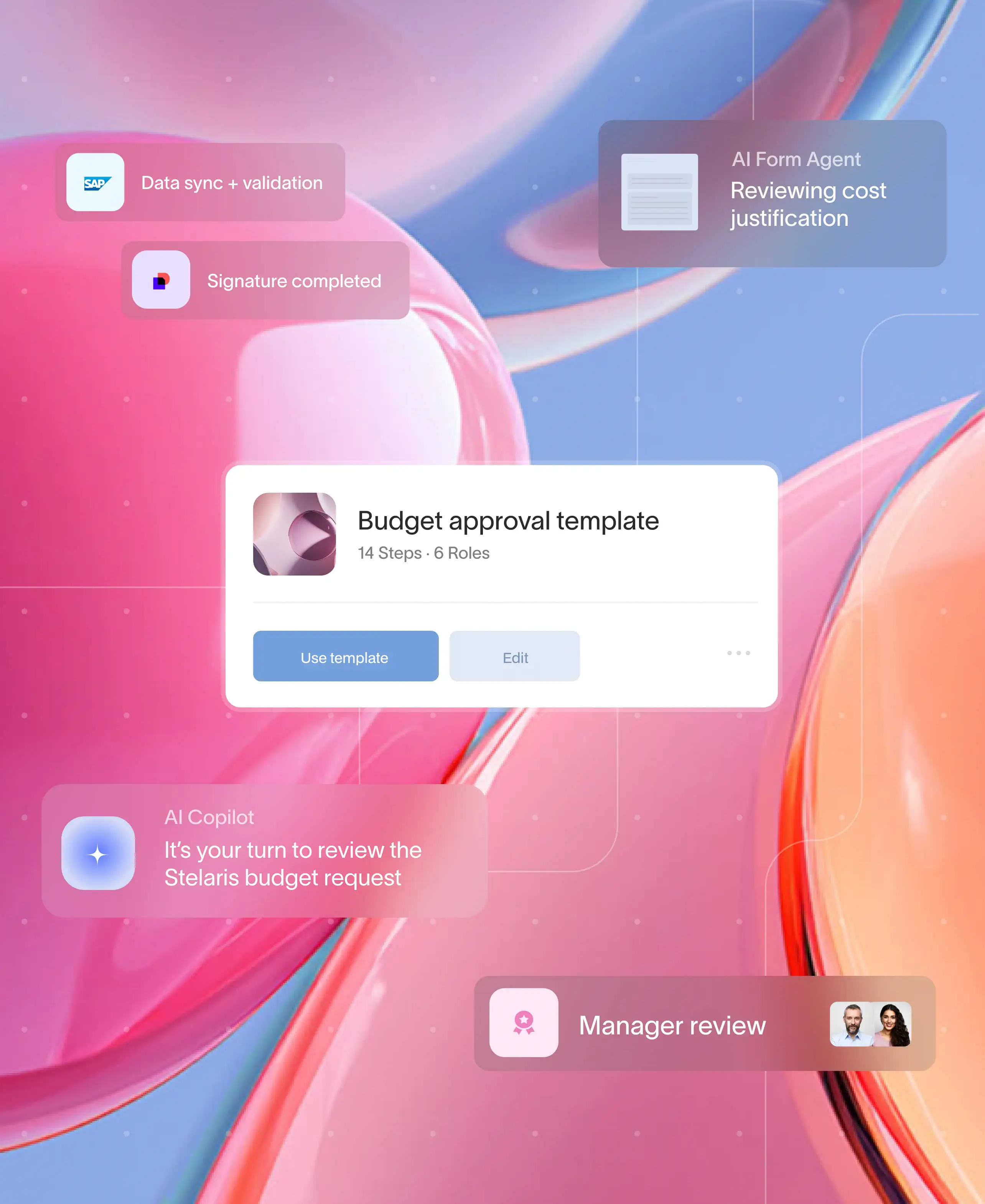
The ability to forge authentic customer connections has become the defining factor between thriving businesses and those merely surviving. Engaged customers are more likely to become repeat buyers, refer others, and advocate for your brand.
Engaging customers effectively requires understanding their unique needs and preferences. Some customers seek personalized, hands-on experiences, while others prefer efficiency and self-service options. With diverse customer needs and the rise of digital technologies, it is important to determine the most effective customer engagement model for your business.
This comprehensive guide on high touch vs low touch customer engagement model will delve into the intricacies of both approaches. We will provide insights into how they work, their key differences, and how to choose the right model for your business. Let's embark on this journey to enhance your customer engagement and drive success.
High touch engagement: Crafting personalized customer journeys
What is the high touch engagement model?
High touch engagement is a strategy that emphasizes personalized, one-on-one interactions with customers. It involves dedicating resources to understand each client's specific needs, challenges, and goals. This model is characterized by frequent, direct communication and customized solutions, aiming to build deep, long-lasting relationships.
The high touch engagement model is particularly suited for businesses that offer complex, high-value products or services where customer success is paramount. Industries such as consulting, software as a service (saas), healthcare, and financial services frequently rely on this model, as it enables them to provide tailored guidance, ensure seamless onboarding, and foster trust with clients over time.
How does a high touch engagement model work?
In a high touch model, businesses assign dedicated account managers or customer success teams to individual clients. These professionals:
- Engage in regular communication: Through meetings, calls, and personalized emails, they stay connected with clients.
- Provide tailored solutions: They customize products or services to meet specific customer requirements.
- Offer proactive support: Anticipating client needs and addressing issues before they escalate.
The high touch approach ensures that customers feel valued and understood, fostering loyalty and satisfaction.
Examples of high touch engagement
- Dedicated customer success managers: Dedicated personnel ensures personalized support and a seamless experience for your customers.
- Customized onboarding experiences: As a part of their customer onboarding, software companies often provide personalized training sessions to help clients integrate complex solutions into their operations.
- Exclusive events and perks: Luxury brands may offer VIP experiences, early access to products, or personalized consultations to their top-tier customers.
Here’s a table outlining the pros and cons of the high touch engagement model:
High touch engagement is particularly effective for businesses offering complex products or services, or targeting high-value clients who expect a premium experience.
Low touch engagement: Optimizing efficiency through automation
What is the low touch engagement model?
A low touch engagement model leverages technology and automation to interact with customers efficiently. It focuses on providing standardized support through self-service tools, minimizing the need for direct human interaction. This model is ideal for businesses aiming to scale their operations and serve a large customer base.
How does a low touch engagement model work?
In a low touch model, businesses utilize:
- Automated communication: Such as email campaigns and notifications.
- Self-service resources: Including FAQs, knowledge bases, and tutorials.
- Digital support channels: Like chatbots and online portals.
The goal is to empower customers to find solutions independently, enhancing efficiency and reducing operational costs.
Examples of low touch engagement
- Self-service portals: Customers can access account information, troubleshoot issues, and manage services without assistance.
- Automated onboarding sequences: Custom automated workflows can also be used to onboard new customers seamlessly.
- AI-powered chatbots: Provide instant responses to common inquiries, available 24/7.
Here’s a table highlighting the pros and cons of the low touch engagement model:
Low touch engagement suits businesses with standardized products or services, where personalized interaction isn't essential for customer satisfaction.
High touch vs low touch customer engagement models: 5 key differences
High touch engagement emphasizes personalized, relationship-driven interactions, ideal for businesses dealing with complex products or high-value clients who need tailored support. In contrast, low touch engagement relies on automation and scalability, suiting businesses with high customer volumes or simpler product offerings where efficiency and cost-effectiveness are prioritized. Understanding the fundamental differences between high touch and low touch engagement models is essential for aligning your strategy with customer needs and business goals.
- Personalization level
- Scalability
- Cost structure
- Relationship depth
- Customer autonomy
1. Personalization level
In the context of high touch vs low touch engagement, personalization is a defining factor. High touch models shine in providing a high degree of tailored experiences, while low touch models focus on efficient, standardized interactions that suit a wide audience.
- High touch: Delivers highly personalized experiences, with services tailored to individual customer needs.
- Low touch: Offers standardized support, relying on automation to handle common customer interactions.
This distinction highlights the core of high touch vs low touch engagement.
2. Scalability
High touch and low touch engagement models differ significantly in scalability. Businesses need to assess their capacity and customer demand to implement the right approach.
- High touch: Limited scalability due to the intensive resources required for personalized interactions.
- Low touch: Highly scalable, enabling businesses to serve a large number of customers efficiently.
3. Cost structure
When considering high touch vs low touch engagement, the cost structure is often a deciding factor. High touch models demand more resources, while low touch models prioritize cost-efficiency through automation.
- High touch: Higher operational costs due to dedicated staff and customized success teams.
- Low touch: Lower costs achieved through automation and reduced need for human resources.
4. Relationship depth
High touch vs low touch engagement models also vary in the depth of customer relationships they foster. Businesses must choose a model that aligns with their relationship goals.
- High touch: Builds deep, meaningful relationships, enhancing customer loyalty and retention.
- Low touch: Focuses on transactional relationships, providing quick solutions without extensive engagement.
5. Customer autonomy
In high touch and low touch engagement models, customer autonomy reflects the level of self-service available. High touch models emphasize guidance, while low touch models empower self-reliance.
- High touch: Customers rely on direct support and guidance from the business.
- Low touch: Empowers customers to find answers and resolve issues independently.
Determining the right engagement model for your business: High touch vs low touch
Choosing between a high touch and low touch engagement model requires a strategic evaluation of various factors. Assessing high touch vs low touch customers can guide this strategic evaluation.
1. Assessing your product or service complexity
A high touch is preferable when your product or service is complex and requires detailed explanation or customization. Customers need guidance to realize the full value of your offering. Low touch is suitable when your product or service is straightforward and user-friendly. Customers can navigate and utilize offerings without significant assistance.
2. Understanding your customer segments
High-value customers will expect and require a high touch approach to meet their specific needs. These customers bring substantial, long-term value to the business. Mass-market customers will benefit from a low touch model that provides quick and efficient support.
3. Evaluating resources and scalability
Resource availability: Do you have the capacity to support personalized interactions?
Growth objectives: If rapid scaling is a goal, a low touch model may be more sustainable.
4. Considering a hybrid approach
Blending both, high touch and low touch engagement models, can provide flexibility and efficiency.
Segmented engagement: Offer high touch support to premium clients and low touch options to others.
Adaptive strategies: Start with a high touch approach during onboarding, then transition to low touch as customers become more self-sufficient.
Overcoming challenges in engagement models
Implementing a high touch or low touch engagement model comes with challenges.
Challenges in low touch engagement
The future of customer engagement: Embracing flexibility
The business landscape is ever-evolving, and customer expectations continue to rise. Having a mature engagement model plays a key role in reducing customer churn.
- Embrace omnichannel engagement: Offer multiple channels for customers to interact with your business, blending high touch and low touch elements.
- Adopt customer feedback loops: Continuously gather and act on customer insights to improve your engagement model.
- Invest in emerging technologies: Explore AI, machine learning, and other innovations to enhance both high touch and low touch experiences.
How Moxo bridges the gap between high touch and low touch engagement
At Moxo, we recognize that effective customer engagement isn't about choosing one model over the other—it's about integrating both to meet diverse customer needs.
Enhancing high touch engagement with technology
- Unified collaboration platform: The Moxo client portal enables seamless communication between businesses and clients, facilitating personalized interactions.
- Secure document sharing: Easily exchange sensitive information in a secure environment, enhancing trust and efficiency.
Streamlining low touch engagement through automation
- Automated workflows: Reduce manual tasks by automating routine processes, improving efficiency.
- Self-service options: Provide clients with access to resources and tools to manage their needs independently.
- Integration capabilities: Moxo integrates with existing systems to create a cohesive experience.
By leveraging Moxo's solutions, businesses can tailor their engagement strategies, offering the right balance of personalization and efficiency. This balance addresses the needs of high touch vs low touch customers effectively.
Get started with Moxo to develop a mature customer engagement strategy for your business.
Conclusion
Choosing between high touch and low touch engagement models doesn't have to be an either-or decision. By understanding your customers, aligning with your business goals, and leveraging the right tools, you can create a balanced approach that drives customer satisfaction and business growth.
While high-touch engagement can be more expensive due to its resource-heavy, personalized approach, low touch engagement offers an economical alternative that supports scalability through automation and streamlined processes. By strategically utilizing both, businesses can provide high touch support for high-value or complex clients who need it most,
Remember, effective customer engagement is about delivering value at every touchpoint. Whether through personalized interactions or efficient self-service options, the goal is to meet and exceed customer expectations.
Get started with Moxo to scale up your customer engagement strategy.
FAQs
How can businesses maintain personalization in a low touch engagement model?
Even in a low touch model, personalization is possible through data analytics and customer segmentation. By tailoring automated messages based on customer behavior and preferences, you can create a more personalized experience. Moxo’s client portal features can be used to create personalized experiences for your customers.
What industries benefit most from high touch engagement models?
Industries that offer complex, high-value products or services typically benefit from high touch engagement. This includes sectors like finance, consulting, real estate, and B2B technology solutions. Clients in these industries often require detailed guidance and value personalized relationships.
Can a low touch engagement model effectively handle customer churn?
While low touch models focus on efficiency, they can still address customer churn by proactively identifying at-risk customers through data analysis and implementing automated retention strategies.
How do I decide which customers should receive high touch engagement?
Segment your customers based on factors like revenue potential, strategic value, and complexity of needs. High-value customers or those requiring significant support are prime candidates for high touch engagement. Regularly reviewing customer segments ensures resources are allocated effectively.
What role does technology play in high touch engagement?
Technology enhances high touch engagement by streamlining processes, facilitating communication, and providing tools for collaboration. Platforms like Moxo enable seamless interactions, secure document sharing, and real-time updates, enriching the personalized experience without overwhelming resources.





